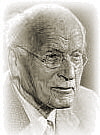 Next
we consider the concept of the archetypes of the collective
unconscious, as developed in Jungian psychology. In this I am
leaning heavily on the work of Anthony Stevens, a Jungian psychologist
who has devoted much attention to the connections between the
archetypes and evolutionary neuroethology (Stevens 1982; 1993).
Next
we consider the concept of the archetypes of the collective
unconscious, as developed in Jungian psychology. In this I am
leaning heavily on the work of Anthony Stevens, a Jungian psychologist
who has devoted much attention to the connections between the
archetypes and evolutionary neuroethology (Stevens 1982; 1993).
The archetypes of the collective unconscious are the psychological aspects of the innate perceptual-behavioral structures of the human species. For example, Jung (CW 8, ¶404) says,
To the extent that the archetypes intervene in the shaping of conscious contents by regulating, modifying, and motivating them, they act like the instincts.
Thus the archetypes are not innate images, as is often supposed, but dynamic forms shaping perception and behavior. Together they constitute the collective unconscious, so called because they are common to all humans and because they are unconscious until activated by a releasing stimulus (which may be internal or external). As Jung (CW 9, pt. 1, ¶91) remarks,
The hypothesis of the collective unconscious is … no more daring than to assume that there are instincts.
When an archetype is activated, it causes the releasing situation or relationship to be experienced as numinous and significant; the individual may feel predisposed or even compelled to act in evolutionarily relevant ways. Mating behavior is the clearest example.
 Return to MacLennan’s home page
Return to MacLennan’s home page Send mail to Bruce MacLennan / MacLennan@cs.utk.edu
Send mail to Bruce MacLennan / MacLennan@cs.utk.edu  This page is www.cs.utk.edu/~mclennan/papers/EJT/IIB.html
This page is www.cs.utk.edu/~mclennan/papers/EJT/IIB.html